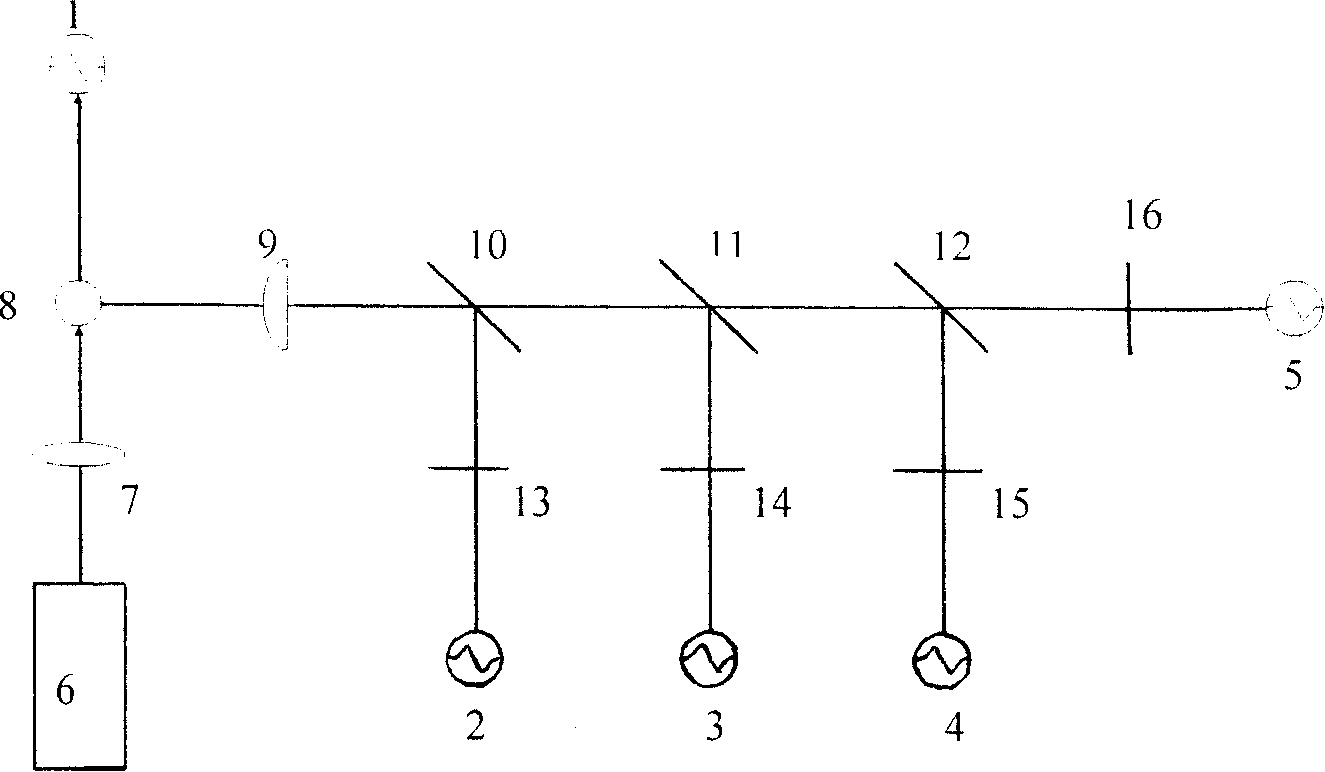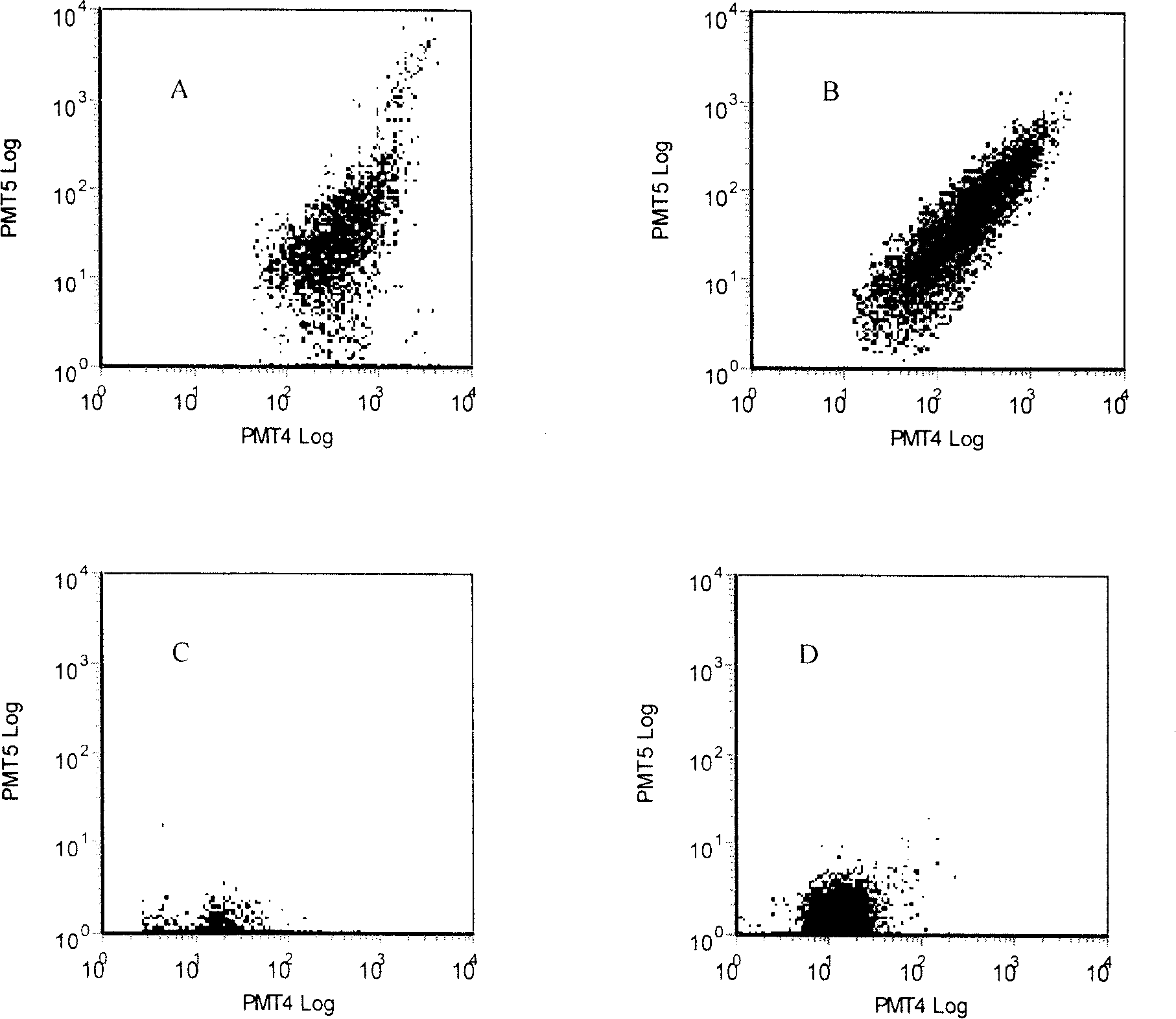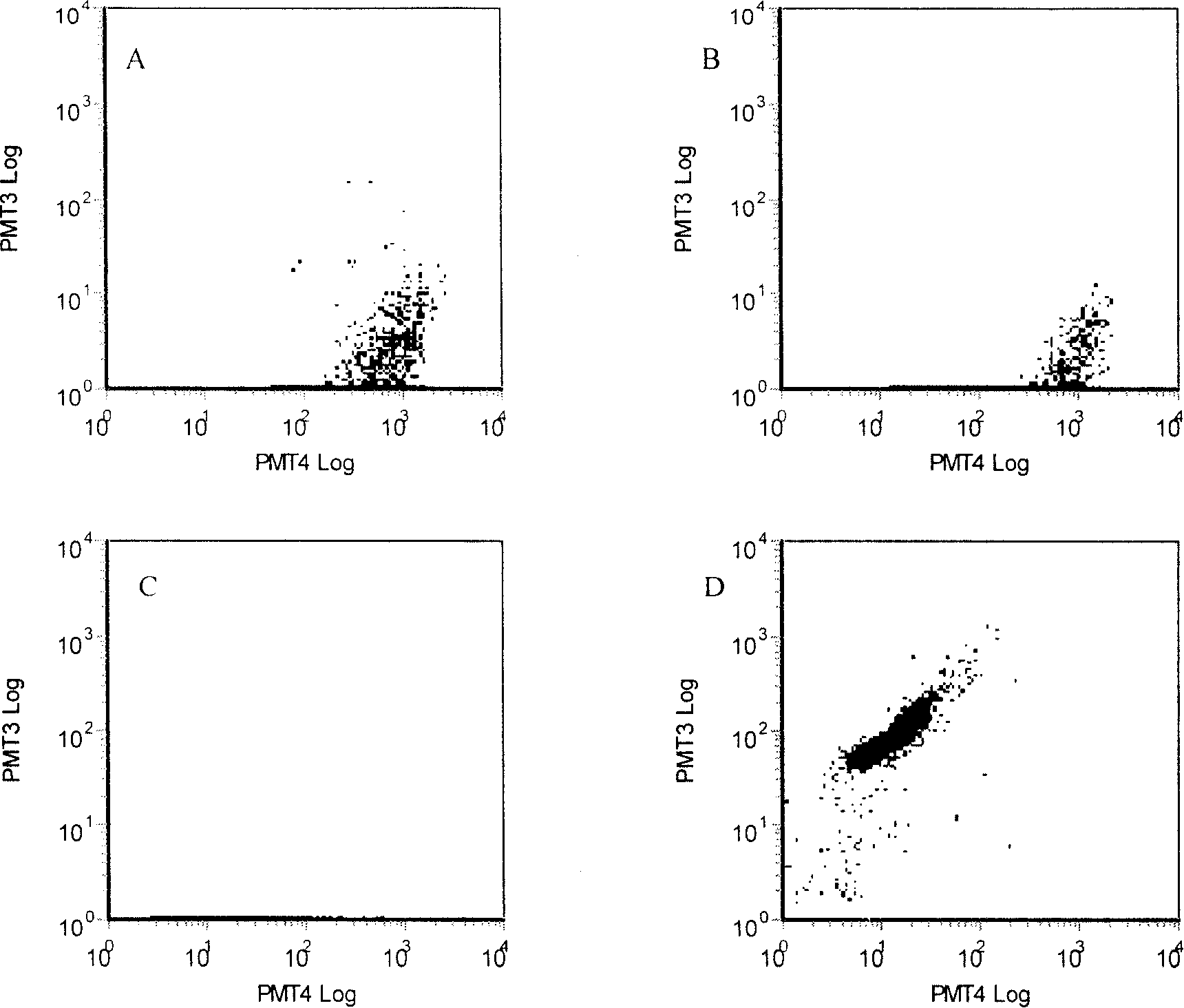Flow type cell detection method of aerobic non-oxygen-production photosynthetic heterotrophy bacterium
A technology of heterotrophic bacteria and flow cytometry, applied in the field of bacterial detection, can solve the problems of biomass estimation error, influence of AAPB function, AAPB quantitative error and so on.
Inactive Publication Date: 2008-06-25
XIAMEN UNIV
View PDF0 Cites 2 Cited by
- Summary
- Abstract
- Description
- Claims
- Application Information
AI Technical Summary
Problems solved by technology
However, studies have shown that this method also counts cyanobacteria, resulting in significant errors in AAPB quantification, which is more pronounced in sea areas or seasons with high cyanobacteria densities
This may bring errors to the estimation of the global AAPB biomass, and even affect the conclusions or inferences on the role of AAPB in the carbon cycle and other aspects (Zhang Yao, Jiao Nianzhi. A study on the quantitative method of aerobic anoxic photoheterotrophic bacteria .Science Bulletin, 2003, 48(1))
Method used
the structure of the environmentally friendly knitted fabric provided by the present invention; figure 2 Flow chart of the yarn wrapping machine for environmentally friendly knitted fabrics and storage devices; image 3 Is the parameter map of the yarn covering machine
View moreImage
Smart Image Click on the blue labels to locate them in the text.
Smart ImageViewing Examples
Examples
Experimental program
Comparison scheme
Effect test
Embodiment Construction
[0033] The following embodiments will further illustrate the present invention in conjunction with the accompanying drawings.
the structure of the environmentally friendly knitted fabric provided by the present invention; figure 2 Flow chart of the yarn wrapping machine for environmentally friendly knitted fabrics and storage devices; image 3 Is the parameter map of the yarn covering machine
Login to View More PUM
 Login to View More
Login to View More Abstract
The present invention relates to bacteria detection, and flow cytometer detecting process of aerobic anoxygenic photoheterotrophic bacteria (AAPB). The detection process includes the following steps: adding formaldehyde to the sample and culturing; staining the sample with DAPI, collecting forward and lateral scattered light, DAPI fluorescence signal, chlorophyll fluorescence signal and bacterial chlorophyll-a fluorescence signal and separating AAPB from other planktons by means of the difference of signals; separating planktons from other matters by means of DAPI fluorescence signals; separating panktobacteria from other micro planktons by means of the strength of forward and lateral scattered light; eliminating the influence of other matters on the AAPB detection by means of the strength of chlorophyll fluorescence signal; and separating AAPB from other bacteria by means of bacterial chlorophyll-a and obtaining the accurate number of AAPB.
Description
technical field [0001] The present invention relates to the detection of a kind of bacterium, especially relates to the detection of a type of marine ultramicrobial organisms—Aerobic Anoxyenic Phototrophic Bacteria (AAPB), through combining with flow cytometry, establishing A rapid detection method for aerobic anoxygenic photoheterotrophic bacteria. Background technique [0002] Discovered more than 20 years ago (Shiba T, Simidu U, Taga N. Distribution of aerobic bacteria which containbacteriochlorophyll a. Appl Environ Microbiol, 1979, 38: 43-45) is a class of aerobic non-oxygenous photoheterotrophic bacteria with different Aerobic heterotrophic bacteria function in oxygenic photosynthesis, but until recently their important role in marine ecosystems has not received much attention (Kolber Z S, Plumley F G, Lang A S, et al. Contribution of aerobicphotoheterotrophic bacteria to the carbon cycle in the ocean. Science, 2001, 292: 2492-2495), AAPB, as an important part of the ...
Claims
the structure of the environmentally friendly knitted fabric provided by the present invention; figure 2 Flow chart of the yarn wrapping machine for environmentally friendly knitted fabrics and storage devices; image 3 Is the parameter map of the yarn covering machine
Login to View More Application Information
Patent Timeline
 Login to View More
Login to View More Patent Type & Authority Patents(China)
IPC IPC(8): C12Q1/04
Inventor 焦念志骆庭伟张瑶
Owner XIAMEN UNIV
Features
- R&D
- Intellectual Property
- Life Sciences
- Materials
- Tech Scout
Why Patsnap Eureka
- Unparalleled Data Quality
- Higher Quality Content
- 60% Fewer Hallucinations
Social media
Patsnap Eureka Blog
Learn More Browse by: Latest US Patents, China's latest patents, Technical Efficacy Thesaurus, Application Domain, Technology Topic, Popular Technical Reports.
© 2025 PatSnap. All rights reserved.Legal|Privacy policy|Modern Slavery Act Transparency Statement|Sitemap|About US| Contact US: help@patsnap.com



